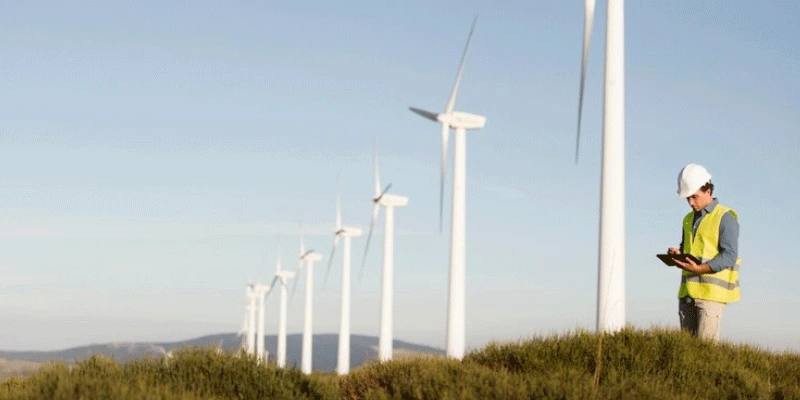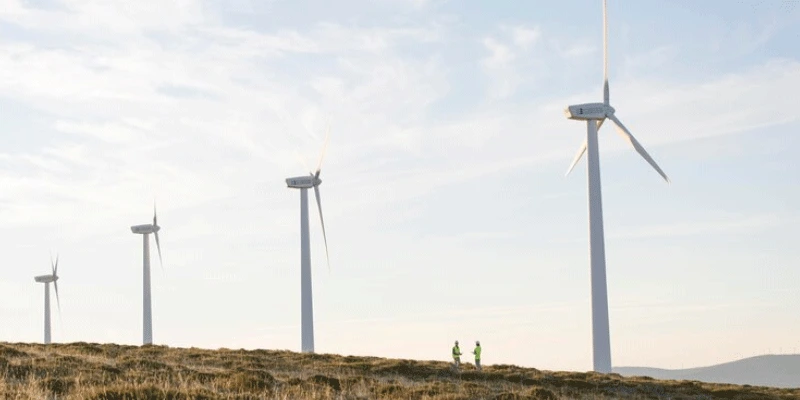Wind turbines are a cornerstone of renewable energy, and their efficiency depends significantly on the height of their steel towers. The tower is a critical component, not just for supporting the turbine but also for determining how much wind energy can be captured and converted into electricity. This article delves into how the height of steel towers affects wind turbine performance and why it matters for the future of clean energy.
Why Tower Height Matters
The height of a wind turbine tower plays a direct role in its performance. Wind speed generally increases with height because higher altitudes experience less friction from the ground and surrounding obstacles like buildings and trees. Taller towers allow turbines to access these stronger and more consistent wind flows, improving energy output.
For example, a 10% increase in wind speed can lead to a 30% increase in energy production. This exponential relationship underscores the importance of optimizing tower height to maximize efficiency.
How Steel Towers Enable Greater Heights
Steel is the preferred material for wind turbine towers due to its strength, durability, and flexibility. Steel towers are designed to support the heavy nacelle and blades of the turbine while withstanding environmental stresses such as high winds and extreme weather conditions. Their modular construction also allows for increased height without compromising structural stability.
The strength-to-weight ratio of steel makes it an ideal material for building tall towers. These towers can reach heights of 80 to 160 meters or more, enabling turbines to operate in high-wind zones that are inaccessible to shorter towers.
Benefits of Taller Steel Towers
1. Increased Energy Output
The primary benefit of taller towers is higher energy generation. By reaching stronger wind currents at greater heights, turbines can operate more efficiently and consistently. This leads to a significant boost in the amount of electricity generated, making taller towers a cost-effective investment for renewable energy projects.
2. Better Access to Wind Resources
In many regions, especially those with complex terrain, wind speeds at lower altitudes can be inconsistent. Taller towers solve this problem by elevating turbines above these irregular wind patterns, ensuring steady and reliable energy production.
3. Reduced Land Impact
Taller towers allow wind farms to use fewer turbines to achieve the same energy output, reducing the overall land area required for installations. This is particularly beneficial in regions where land availability is limited or expensive.
4. Improved Grid Integration
Taller towers enable turbines to generate more electricity, which can help meet increasing energy demands and stabilize power grids. This is especially important as more countries transition to renewable energy sources.
Challenges of Building Taller Towers
1. Transportation and Logistics
Transporting steel sections for tall towers to remote or offshore locations can be challenging. Roads, bridges, and transportation vehicles must accommodate these large components, which can increase costs and complicate logistics.
2. Structural Stability
As towers get taller, they are exposed to greater forces from wind and vibrations. Engineers must ensure that these towers maintain their stability and do not experience excessive wear or fatigue over time. Innovations in steel design and construction techniques are addressing these challenges.
3. Foundation Requirements
Taller towers require stronger and deeper foundations to support their increased weight and height. This can add to the cost and complexity of installation, especially in areas with soft or unstable soil.
Innovations in Steel Tower Design
To overcome the challenges of building taller towers, the wind energy industry is exploring new approaches:
Modular Construction: Steel towers are often built in sections that can be transported and assembled on-site. Modular designs allow for greater flexibility in achieving the desired height.
Hybrid Towers: Combining steel with materials like concrete is becoming a popular solution for taller towers. These hybrid designs reduce overall weight while maintaining strength and stability.
Advanced Alloys: Researchers are developing stronger and lighter steel alloys to improve the structural performance of tall towers.
Smart Towers: Integrating sensors and monitoring systems into steel towers is another innovation. These technologies track stress, vibration, and other factors to optimize performance and predict maintenance needs.
Environmental and Economic Impact
Taller steel towers contribute to the global shift toward clean energy by improving the efficiency and scalability of wind power. Their increased energy output reduces reliance on fossil fuels, lowering greenhouse gas emissions and promoting environmental sustainability. Economically, the ability to generate more electricity with fewer turbines can drive down the cost of wind energy, making it more competitive with traditional power sources.
Conclusion
The height of steel towers is a game-changer in wind turbine performance, enabling access to stronger winds and significantly boosting energy generation. While there are challenges to building taller towers, advancements in steel design and construction methods are paving the way for even greater heights. As the renewable energy industry evolves, the role of tall steel towers will only grow, driving efficiency, sustainability, and innovation in wind energy production. By investing in taller towers, we are taking a crucial step toward a cleaner and greener future.



